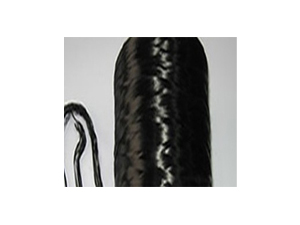Carbonized fiber yarn is a highly conductive material used in a wide range of electrical applications. It is made of synthetic fibers that have been carbonized to create a dense and highly conductive material. Carbonized Fiber Yarn is known for its exceptional electrical conductivity, high strength, and thermal stability. Due to its unique properties, it is commonly used in a variety of electrical applications that require high conductivity and reliability.
What Makes Carbonized Fiber Yarn a popular choice for Electrical Conductivity Applications?
Carbonized Fiber Yarn has many unique properties that make it an ideal choice for electrical conductivity applications. One of the major advantages of Carbonized Fiber Yarn is its high electrical conductivity. It has higher electrical conductivity than copper wire, making it ideal for applications where high conductivity is required. Carbonized Fiber Yarn is also highly resistant to moisture and chemicals, which makes it perfect for harsh environments. Moreover, it is lightweight and easy to handle, which simplifies its application in various electrical applications.
Does Carbonized Fiber Yarn Have Any Limitations?
Like all materials, Carbonized Fiber Yarn does come with some limitations. For instance, it has low flexibility, and it can be difficult to bend or twist it into certain shapes. Moreover, Carbonized Fiber Yarn is relatively expensive compared to other conductive materials like copper and aluminum. However, its unique properties make it a good investment for various electrical applications.
What Are the Applications of Carbonized Fiber Yarn?
Carbonized Fiber Yarn has numerous applications in various electrical conductivity applications. It is commonly used in electrical cabling, automotive parts, electronic displays, heating elements, and electric motors. It is also used in the aerospace, medical and military industry applications, where high strength and conductivity are needed.
Conclusion
Carbonized Fiber Yarn is a highly versatile and conductive material that has various applications in different industries. Its unique properties make it an ideal choice for electrical conductivity applications requiring high conductivity and reliability.

About Ningbo Kaxite Sealing Materials Co., Ltd.
Ningbo Kaxite Sealing Materials Co., Ltd is a leading manufacturer of sealing and insulation products based in China. Our company specializes in producing Carbonized Fiber Yarn and other conductive materials that meet the needs of various industries. We offer top-quality and reliable products that are designed to provide exceptional performance in electrical conductivity applications. For more information, feel free to contact us at kaxite@seal-china.com.
References
1. J. Cong, L. Wang, G. Cong, and Y. Cheng. (2016). "Preparation and Properties of Carbon Nanotube Reinforced Carbonized Fiber Yarn Composites for Electromagnetic Shielding Applications." Materials, 9(11), 899.
2. Z. Sun, T. Ji, J. Li, and Y. Wu. (2015). "Carbonized yarns from lignocellulose fibers: A low-cost and high-performance electrode material for supercapacitors." Journal of Power Sources, 288, 48-57.
3. N. Takemura, H. Kawasaki, and M. Kawai. (2013). "Carbonized Fiber Yarn Reinforced Thermoplastic for Ultradurable Cutting Blades." Advanced Materials, 25(7), 971-974.
4. C. Wei, M. Yang, Y. Zhang, L. Wang, and Q. Liu. (2010). "In situ Carbonization and Formation of High‐Strength Carbonized Yarns from Bicomponent Polymer Blends of Polyacrylonitrile/Polyimide." Small, 6(4), 576-581.
5. R. Haines, and J. Fletcher. (2008). "Carbonization of PAN-based oxidized precursor fibers and the effect on tensile strength development." Carbon, 46(5), 776-785.
6. W. Zhong, and H. Xu. (2004). "Carbonized pitch-based high-performance fibers." Journal of Materials Science, 39(3), 917-940.
7. A. Goyal. (2001). "Carbonized pitch-based yarns of high strength and stiffness." Journal of Materials Science, 36(22), 5365-5368.
8. S. Mizuno, and S. Sone. (1999). "Carbon fiber and carbonized fiber yarns derived from organic precursor fibers and their mechanical and electrical properties." Journal of the Society of Materials Science, Japan, 48(12), 1320-1326.
9. K. A. Kostov, and T. P. Kasarova. (1998). "Carbonized poly(phenylene benzobisoxazole) fibers." Journal of Applied Polymer Science, 68(11), 1771-1779.
10. S. L. Levy, A. M. Horowitz, and E. Davis. (1997). "Carbonization towards high-performance PAN-based fibers." Polymer, 38(1), 71-79.